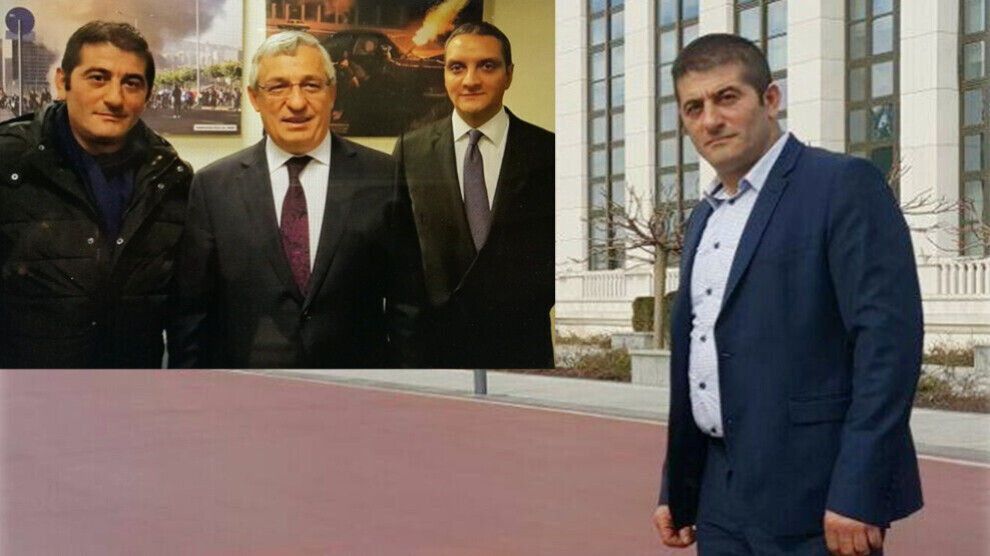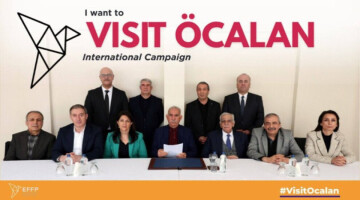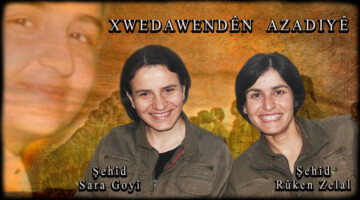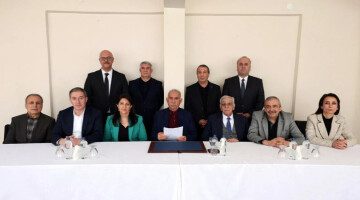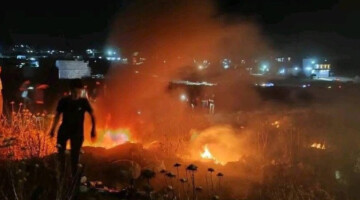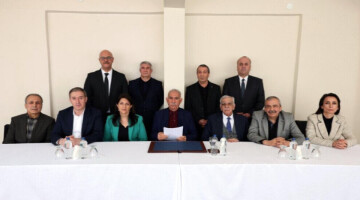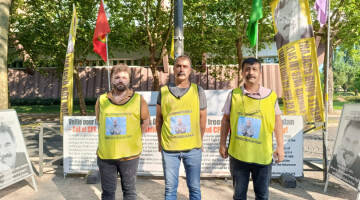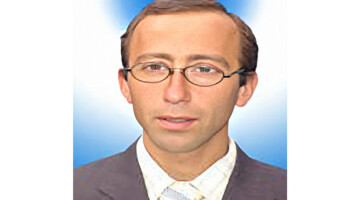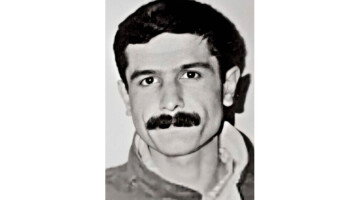Two photos, one in front of Erdoğan's palace in Ankara and the other in the Turkish embassy in Paris, lift the curtain on a Turkish death squad in Europe. The photos show the sponsors, the coordinators and the executors.
A look back to June 2017: A black Mercedes E-Class drives in front of the building of the Kurdish National Congress (KNK) in Brussels. The occupants of the car have been carrying out different activities and gathering information for some time. The vehicle that makes at least three laps around the KNK is being followed by the police. The Belgian police do not take this case seriously at first, although Kurdish officials have repeatedly warned them about the suspects. It is only after technical and physical observation that the authorities finally understand the seriousness of the situation.
That was on 14 June 2017. The suspects drove from the KNK into the Louise tunnel and were followed by the police. Eventually they were stopped for one simple reason: over speeding. The police gave the impression of a routine traffic control. Identification documents were found during a search of the vehicle.
This investigation into an assassination attempt on Kurdish activists is confidential to this day. However, according to information from sources close to the case, the investigation file is thousands of pages long.
Who was in the car?
On 14 March 2021, the Journal de Dimanche revealed the names of three people in the car checked by the Belgian police. One of the three was Zekeriya Çelikbilek, who is believed to be a former Turkish military man with French nationality. Çelikbilek had been living in the Paris suburb of Argenteuil for six to seven months when the vehicle was stopped. The second person was Yakup Koç, who carried a Turkish police ID with him.
According to our information, Yakup Koç introduced himself as "Albay" (Colonel). It is believed that he is the organizer of the mission to murder Kurdish activists in Brussels. The third person was Haci Akkulak, of Kurdish origin and resident in Belgium.
Two days after this inspection on the car, on 16 June 2017, the Belgian authorities saw the threat better. "Four people of Turkish origin would have come to Belgium or rented an apartment," said the investigation by the Journal de Dimanche. One of them would be a sniper. The death squad targeted Remzi Kartal, co-chair of Kongra Gel, as well Zübeyir Aydar from the direction of the KCK (Community of Kurdistan Communes).
Police operation in Belgium
According to the information available to us, the Belgian police carried out an operation a few months after checking the car. Zekeriya Çelikbilek and Yakup Koç had already left Belgium. Belgian police appeared to have preferred targeting the spy ring rather than arresting the Turkish agents. The reason for this choice is unknown. The searches took place in Ghent. A person of Turkish origin and Haci Akkulak were the subject of these searches, during which various materials were confiscated. The Turk was Necati Demirogulları, a businessman from Sakarya in Turkey.
Confessions from the death squad
It is important to analyse Haci Akkulak's confession. After agreeing to collect information for the Turkish intelligence service, Akkulak also informed the targeted Kurdish politicians and the Belgian police when he realized that the aim of this mission was to carry out assassinations.
According to our sources, the person who referred Akkulak to the assassination team was Necati Demirogulları. After the search of his house, he confessed everything he knew to the police. He is the son-in-law of Yakup Koç and is said to have supported him materially.
The confessions of Necati Demirogullari and Haci Akkulak show that the team of assassins had close ties to Ankara and the Turkish embassy in Paris. Zekeriya Çelikbilek is said to have even told Hacı Akkulak at a private meeting that he played a role in the murder of three Kurdish women revolutionaries in Paris. It is already known that this investigation in Belgium was instrumental in opening a new investigation into the triple murder in the heart of Paris. The investigation, which the Paris public prosecutor's office resumed in May 2019, is targeting, among other things, the masterminds of the murder and their accomplices. The lawyers of the family of the three Kurdish women have repeatedly said that there is a huge Turkish network that is still active in Europe and is linked to this case.
These photos say it all
The photos we expose show both the faces of those who wanted to commit political murders on European soil and their undeniable ties to the Turkish authorities.
It turns out that Zekeriya Çelikbilek had a very personal relationship with the Turkish President and the Turkish Embassy. One of the photos shows the special relationship between Zekeriya Çelikbilek and the Turkish ambassador Ismail Hakki Musa. There are two other people in the same photo who we were not able to identify.
Zekeriya Çelikbilek appears in two other photos taken inside the embassy, one in front of a table reserved for press releases and the other in the ultra-protected presidential palace in Ankara. He is wearing a dark blue suit in front of the palace. Another photo shows him wearing a commando beret.
Yakup Koç's photos were taken between 2008 and 2011. One of them was taken on the way to Bratislava, another on a visit to Mont Saint-Michel in France. This suspicious visitor appears in many places in the photos.
The evidence is clear. We see a team of killers who have special relationships with the palace and the Turkish embassy. The name of the Turkish diplomat will be mentioned directly in the European investigation decision, confirms the Journal du Dimanche. "Ismail Hakki Musa, the current Turkish ambassador to France, would have coordinated their actions."
Who is Ismail Hakki Musa?
As his dark activities became more visible, Ismail Hakki Musa announced the end of his mandate on 13 March 2021, after four and a half years at the helm of the Embassy of the Republic of Turkey in France.
From the first day of the murder of PKK co-founder Sakine Cansiz, KNK representative Fidan Dogan and youth activist Leyla Saylemez on 9 January 2013, all information pointed to Ankara. The investigation carried out in France and several confidential documents, testimonies and confessions revealed that the attack in Paris was indeed organized by the Turkish secret service MIT.
Ismail Hakki Musa was also among the suspects for several years. The appointment of the Turkish diplomat, who was MIT chairman for a time and later No. 2 in the secret service, to Paris came at a time of intensified espionage networks and assassination attempts.
The diplomat had been sent to France to study in the late 1980s. He took on various tasks for the Turkish state. On 1 November 2011, he was appointed Turkish ambassador to Belgium, an appointment that did not last long. He was recalled to his country in October 2012 and appointed deputy director of MIT at the time Ömer Güney was planning the murder of the three Kurdish women in Paris. During his one-year mission in Brussels, his intensive contacts with Turkish mosques, nationalist or Salafist associations and the grey wolves, a fascist movement serving the Turkish regime, are also said to have attracted the attention of the Belgian secret services.
Later, on 10 February 2015, Musa was appointed deputy head of Turkish intelligence following the resignation of MIT chief Hakan Fidan, who was about to run in the general election. Ismail Hakki Musa remained in this position until 10 March 2015.
The times he ran MIT and was ambassador to Brussels and Paris coincided with the times MIT was charged with serious crimes.
A few months after the interception of MIT trucks transporting weapons for ISIS, Ismail Hakki Musa was negotiating with the jihadists at the Turkish consulate in Mosul. According to official information, the group Islamic State took about 50 Turks hostage in the consulate, who were freed during an operation by the Turkish state. However, many documents and testimonies later showed that there were negotiations between Ankara and ISIS. It was Ismail Hakki Musa who was tasked with resolving this incident after the ISIS captured Mosul.
Just four months after the attempted coup in Turkey, in July 2016, he was finally appointed ambassador to Paris. During this time, the Turkish state has strengthened its Islamic nationalist networks and criminal activities in many countries through mosques, schools, clubs, etc.
There is another important "coincidence": The perpetrator of the triple murder in Paris, Ömer Güney, died on 17 December 2016 under as yet unclear conditions in a French prison, about a month after Hakki Musa was appointed the new ambassador.

